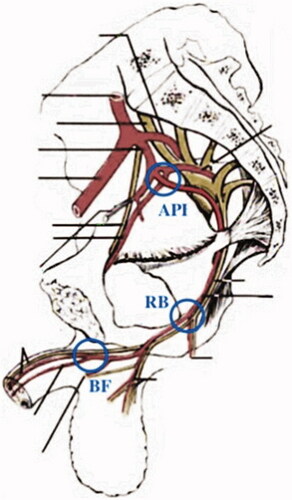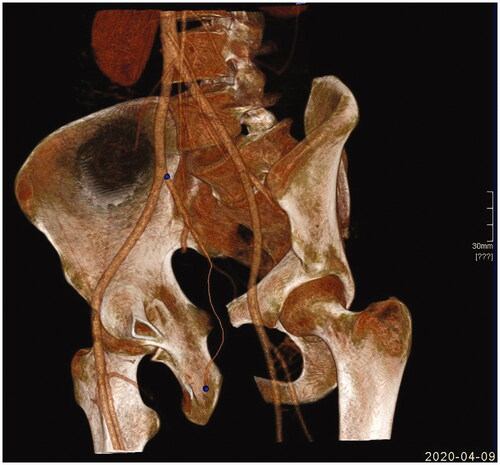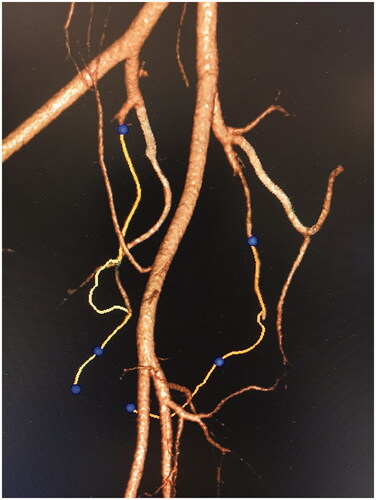Figures & data
Figure 1. Set points of measurement along the internal pudendal artery. API: base of the internal pudendal artery. RB: distally to the rectal branch of the internal pudendal artery. BF: bifurcation of the bulbourethral artery and the dorsal artery of the penis.

Table 1. Diameters of the left and right internal pudendal arteries (in millimeters).
Table 2. Diameters of the left and right internal pudendal arteries for group with BMI under 30 in millimeters.
Figure 2. 3D colour image of highlighted (line marked) passage of IPA from its offspring from the internal iliac artery to the final bifurcation at the root of the penis.

Table 3. Lengths of the left and right internal pudendal arteries (in millimeters).
Table 4. Lengths of the left and right internal pudendal arteries (in millimeters) and its segments for groups with MBI <30 and BMI > 30.

